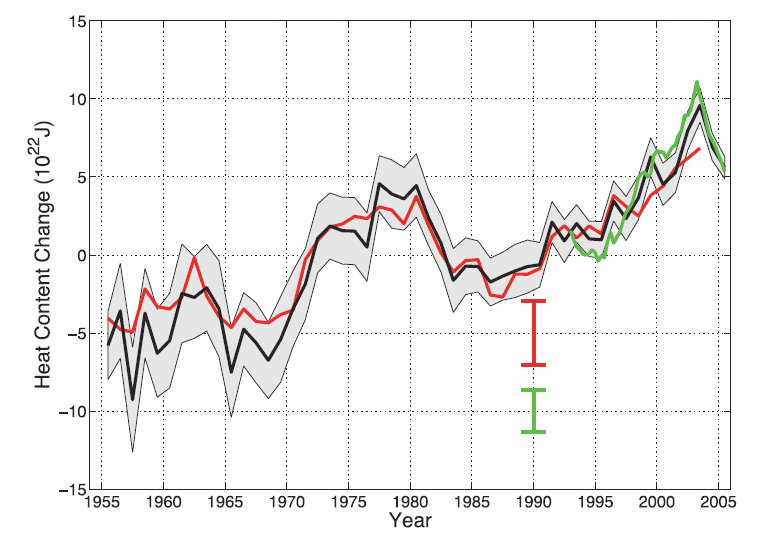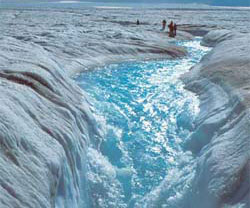Sea level responds to two elements of climate change. First, as the lower portions of the atmosphere warm, freezing levels rise and move poleward, causing glaciers to melt in mountain and polar regions. The resulting meltwater drains to the oceans and increases their volume, thereby raising sea level. Scientists have understood the relationship between sea level and glaciers for more than a century: when ice sheets build on the continents, sea level goes down by 100 meters as the water from the oceans goes into these glaciers; when the ice sheets melt, water rushes back to the oceans and sea level rises, pushing coastlines miles inland from their positions during glacial maxima. Human-induced global warming is therefore augmenting this natural process.
Sea level also responds to climate change through the thermal expansion of water. When water heats, it expands; as the ocean heats with global warming, it expands. As long as ocean temperatures continue to increase, the global ocean will continue to expand.


